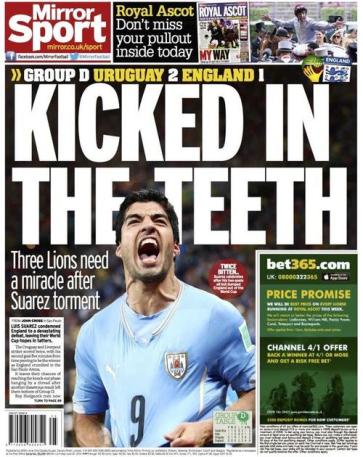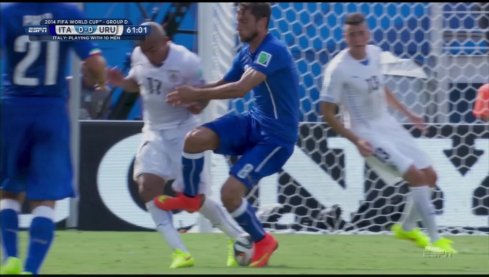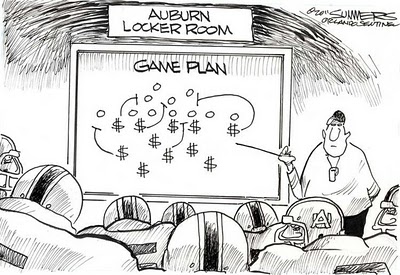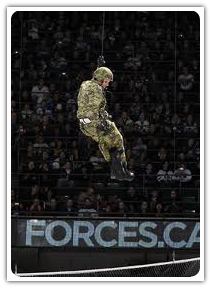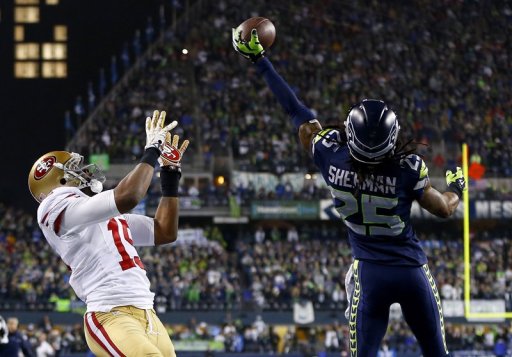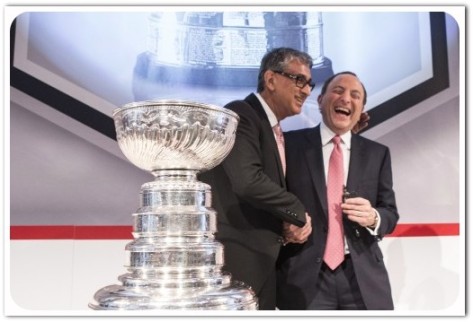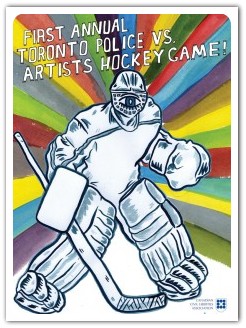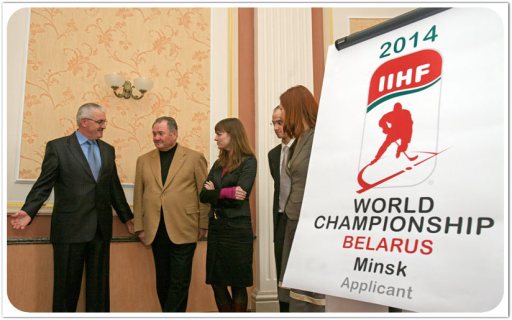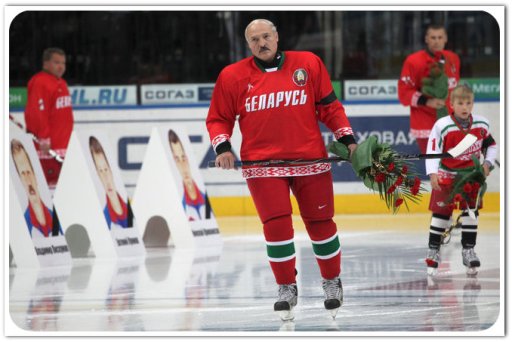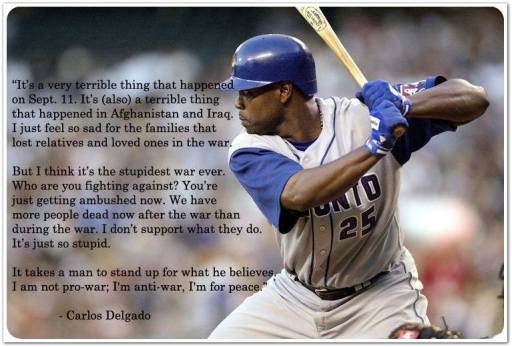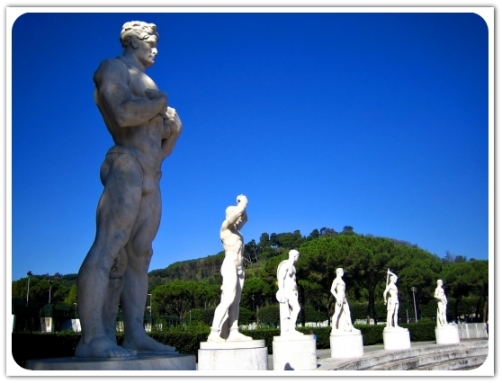Bosnia’s Long March to World Cup 2014
Morgan Radbourne and Justin Panos
It took just one goal by Vedad Ibisevic against Lithuania on October 15th to send Europe’s most impoverished state, Bosnia-Herzegovina, to the World Cup for the first time ever.
The qualification, in the eyes of many ardent supporters, may signal the greatest achievement of the young country since the defence of Sarajevo between 1992-1995 from siege forces who sought to ethnically partition the country between Serbs, Croats and Muslims.
Veteran war correspondent, Ed Vulliamy of the London Observer, calls the Bosnian national team the ‘first truly’ multi-ethnic organization in the country. Indeed, the unification of Bosnians behind the ‘Dragons’ is a novelty in a region where the sport has typically been an extension of hard-liners and social factionalism.
Explosive street clashes in Bosnia have recently occurred between police and locals for whom the government has long ceased to be a representative body. The ongoing street protests emblematize the repressed reality Bosnian citizens inhabit, wherein government office is a proverbial fiefdom feeding the greed of politicos and their cronies. Privatization of state enterprises that were operated in the public good has led to a massive haemorrhaging of jobs in the country and Bosnian workers have formed local plenums in an attempt to wrestle decision-making from unrepresentative governments back to the localities and shop floors.
Today, cities like Brcko are literally under water. The floods near the border of Serbia and Bosnia-Hercegovina have dislocated entire communities while the neglect of governmental bodies gets uglier and more alarming by the day.
The evolution of Bosnian’s national football is bound up in the larger political uprisings as people collectively strive for alternatives to the current configuration of state power and private monopolies that are stifling human development.
From what we saw, the Dragons are leading the people in a positive direction while the government, disfigured by the US-imposed Dayton agreements of 1995 that has entrenched division and maladministration, pulls the citizens into a deeper darkness.
The night they qualified, back in October, we were walking down Marsala Tito street, the main thoroughfare in Sarajevo, watching the fans climb storefront walls and atop street lights, amid smoke and music, laughter and chanting, as empty bottles of Sarajevsko ale kicked about our feet. A sense of united national pride was practically palpable. Providing an upsurge to the celebrations that carried on throughout the night, the victory coincided with Eid al-Adha, a holiday in Bosnia. The fans and citizens were elated about their country’s performance and its prospect on a world stage, an exceedingly rare thing.
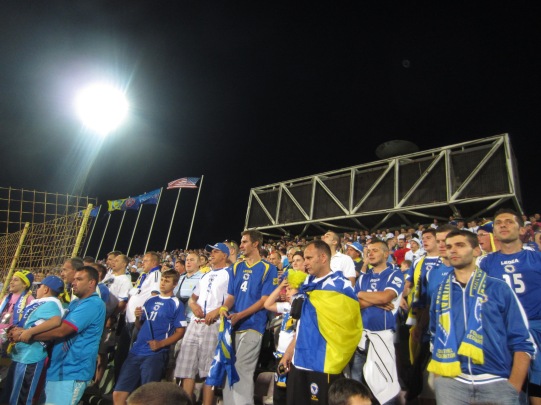
Bosnia versus USA friendly, 4-3 USA, August 14, 2013
Although the Dragon’s chances are decent in the World Cup’s first round, the fate of the country, which suffers from a deep constitutional impasse, is far from a fairy tale ending. The team has a multi-ethnic roster and coaching staff, a high-powered offence (30 goals in qualifiers) and has a growing fan base outside of Bosnia. Meanwhile, politicians shore up party support by appealing to the cheapest form of ethnic populism and run exclusionary local governments that are harmful to the wider body politic.
The first post-war census, conducted early this past fall, was riddled with error, tampering and sabotage. Political leadership hoping to inflate population growth as proof of ethnic dominance announced false results to their constituencies. At the time of writing, despite fanfare from all parties, no official results have been made public. The problems of ethnic-politicking go beyond the census. School systems of the regions, which offer ethnically specific curriculum, are failing to bridge the gaps that are dividing civic society.
Before the World Cup celebrations, the last time Bosnians took to the streets, was during June 2013’s ‘Baby Revolution’. Thousands gathered and blockaded the Bosnian parliament after MP’s failed to address the disturbing legal gap that left babies born after February without passports or medical cards. Serbs, Croats and Bosniaks formed a human circle around the parliament that kept the 1500 MPs and government employees locked inside.
A request by unrelenting Serb MPs to issue new and unique sets of ID numbers to Serb children was a wedge issue in the legislative assembly for two long years. Bosniak and Croat MPs refused the special accommodation and gridlock ensued. The constitutional court of Bosnia intervened to force a solution when it suspended the registration of newborns leaving them without proof of citizenship, ability to travel or access emergency services outside of the country.
Explaining the political situation, or, Bosnian politics as war by other means.
The ID card issue was only the latest manifestation of a political crisis that has been playing out since Bosnia declared independence in May 1991, which is arguably as long as a lot of World Cup spectators have been alive and cheering.
A grossly asymmetrical war broke out in Bosnia between 1992-1995. Bosnian Serb forces, comprised of the former Yugoslav National Army, irregular forces, and superior control of weapons caches, had 10 times the armaments the Bosnians had at the outset. Resisting them were a mainly Muslim rank-and-file but with many Serbs and Croats fighting against ethnically-pure partition. Bosnian Serbs desired territorial separation and integration into ‘Greater Serbia’.
Gradually, a tunnel system and clandestine networks helped the Bosnian Armed Forces achieve a military parity with the Serb forces suffering from increasing demoralisation and desertion, as well as protest within Belgrade. The UN more or less facilitated the war and had disarmed many of the pockets of the populations in areas known as ‘safe-zones’ that were inevitably slaughtered. The international community had imposed an arms embargo on Yugoslavia, limiting Bosnian capacities from the outset, while NATO enforced a No-Fly Zone over the former Yugoslavia.
While the massacres at Srebrenica dominated the headlines in 1995, the narrative of Bosnians as victims peddled by the international press disguised the fact that Bosnians were taking back significant portions of the country between 1994-1995. Srebrenica was a savage attack on a defenceless population and arguably a vicious reprisal attack for their failure of Bosnian Serbs to take ‘Safe-Area’ Gorazde in a previous campaign. Indeed, it must be remembered that Bosnians defended the city of Sarajevo for the entirety of the war, never allowing the occupying forces to move beyond Grbavica. (A borough of Sarajevo)
Nonetheless, the outrage of Srebrenica provided the pretext for America’s unilateral involvement under the cloak of ‘humanitarian intervention’, and led by Richard Holbrooke in fostering a peace treaty signed in Dayton, Ohio by all belligerent sides. The widely unpopular Dayton Agreement is a glorified cease-fire and more or less entrenched the balance of forces as they existed in 1995. It continues to shape Bosnian politics to this day. The Serbian separatists were ensured 49% of the country’s landmass by the deal and formed a quasi-autonomous statelet known as ‘Republika Srpska’ that exists awkwardly within the Bosnian borders.
The obstructionism at the heart of Bosnian politics is based on this constitutionalized balance of power. It invariably boded ill for Bosnian football in the aftermath of war.
Football Hooligans at the Front Lines of War
The political manipulation of football in the Balkans is a time-tested tradition. Before the Bosnian war and of course throughout it.
Way back in the day, to spur legitimacy and support, the Fascist regime of Croatia fielded its first national team in 1941. International matches were played among the Axis states like Italy, Germany, Croatia and Hungary.
As a non-aligned regional bloc formed after World War II, Yugoslavia distinguished itself from Western capitalism and the Warsaw states of the Soviet Union. Yugoslavia’s first and only leader, Josip Broz Tito, organized the anti-fascist resistance in WWII called the Partisans, which gave birth to the Yugoslav federation. He sought to further unify the six nations through popular organisations such as the Yugoslav national football team, in ‘brotherhood and unity’. Four years after the Tito-Stalin split of 1948, which divorced Yugoslavia from the USSR, the two federations met in the 1952 Summer Olympics. Yugoslavia staged a dramatic comeback against the Soviets to tie them 5-5 and then went on to beat them in aggregates, winning the second leg 3-1.
Children from all over Yugoslavia idolised the players of Red Star, Partizan, Dinamo Zagreb and Hajduk. The football league was heavily subsidized by the Yugoslav state during the communist era. According to the director of FK Vojvodina, Cvetko Ridosic, football programs were included in municipal and local budgets. The Communist Party poured money into all levels of the game from the lower to the premier leagues.
The intimate link between politics, football, and the building of Yugoslavia is given in the names of the premier clubs in Yugoslavia—Red Star (on the flag) and Partizan, Spartak (derivative of Spartacus) and Dinamo (a name given to sports programmes by the Soviet political police). Meanwhile, clubs that accentuated nationalist sentiments in their names were forcibly disbanded shortly after the Communists seized power in 1945.
Red Star, however, always had the dormant strains of Serbian folklore among its supporters, which crystallised into a full-fledged nationalist-revivalist ideology by the late 1980s, immortalised in the chant “Red Star Serbia, never Yugoslavia”. Such slogans were more audible in the mid-1980s when the policing of political opposition in Yugoslavia was relaxed and while Glasnost and Perestroika (‘Openness’ and ‘Transparency’) were being implemented in the Soviet Union.
But when Croatia sought to dissolve its ties to Yugoslavia, it withdrew its players from the once-revered Yugoslav national team. Five Croatian clubs and a Slovenian team exited permanently from the Yugoslav league. As evidence of its fledging nationhood, Croatia fielded a team, unacknowledged by UEFA and FIFA, against the United States in 1990.
During the 1990s, football matches were an emergent front in the war between Serbia and Croatia.
On May 13, 1990 a match between Dinamo Zagreb and Red Star Belgrade became emblematic of the hostilities between states and the transformation of beloved football clubs into organs of paramilitary violence. Unlike the hooliganistic rampages of supporters across Europe, the clashes between Red Star and Dinamo Zagreb were intensely political and as one commentator put it, “bore the hallmarks of a planned campaign”.
Upon entering Maksimir Stadium, supporters became uproariously violent, reaching for pre-placed rocks and acid so as to burn through the barriers dividing the fans. While chanting, “we will kill Tudjman!” Serb fans tore down billboards both to attack Croatian fans and shield themselves from the barrage of rocks being volleyed by Croats. (Franjo Tudjman was Croatia’s first president)
Dismayed by the apparent slow response of Yugoslav police in subduing Red Star fans, the team captain from Dinamo Zagreb, Zvonimir Boban, hurled forth a flying kick to a cop and subsequently came to the aid of a Dinamo fan receiving a hailstorm of punches from another officer. Boban’s tempestuousness rendered him a national hero in Croatia even though he received a ban from football. Since the system of repression—police, military, government, and media—was perceived by Croats to be dominated by Serbians, Tudjman vowed to limit Serb access to these jobs.
Standing beside the Red Star coach during the entire melee was Zeljko Raznatovic, known ominously by his nom de guerre, Arkan. In 1990, Arkan had become the head of Delije, the Red Star supporters club. According to one report “When Arkan founded the Serbian volunteer Guard, known as the Tigers, the core of his militia was made up of young men from Delije.” On the Croat side, Tudjman, the former president of Partizan Belgrade, had financial linkages through his ultra-chauvinist party, HDZ, to the Bad Blue Boys, the supporters who led the riots against Red Star fans. The Bad Blue Boys were some of the first to enlist in the incipient Croatian territorial defence forces who sought to defend Vukovar from Arkan and his irregular forces. Vukovar was inevitably levelled by Serbian forces and the road signs vulgarly displayed at a subsequent Red Star home game.
It was Arkan, through his criminal networks of football hooligans and mobsters, that organized out of Delije the Serbian irregulars who first stormed into Northern and Eastern Bosnia. The irregulars maimed, thieved, looted, raped and murdered the unsuspecting inhabitants of Bosnia. The mobilization of Arkan’s White Tigers and other paramilitary forces that were extrusions of Belgrade bears witness to the criminality at the heart of the Balkans conflict in the 1990s. Scholars like Peter Andreas, in his Blue Helmets, Black Markets, have highlighted how explaining the war solely by ‘ancient hatreds’ ignores how the outbreak and persistence of the war was based on a “hierarchy of looters” from Arkan’s White Tigers to Serbian Chetniks and the White Eagles that “sustained themselves through theft, ransoms, and trafficking in contraband.” Indeed, it isn’t a stretch to say that the most heinous irregulars that perpetrated the war’s worst crimes cut their teeth in the violent Serbian/Croatian football culture of the late 1980s.
Football as Normalcy amid the Madness
Picture a city of humble and unarmed inhabitants in a deep valley. Now picture the same city rapidly encircled by 13,000 soldiers of the 5th largest army in Europe perched in the normally serene hilltops shooting wildly at anything that moved below. Picture still flaming mortars and constant sniper fire everyday for over 1000 days as people scrambled to locate water, cigarettes and bread. The architecture deformed. Daily life halted. Happiness cruelly eclipsed. That was Sarajevo from April 5, 1992 to February 29, 1996.
To the outside world, Bosnians were largely cast as hapless victims by the international press, who sensationalized images of a child cut down by a sniper’s bullet or some food queues obliterated by an enemy mortar. But if one looks beyond the conventional portrayal of tormented Bosniaks, the images of the war reveal women collecting water in their finest furs, female soldiers with lipstick of vivid shade. Interspersing the reports of atrocities are the stories of football games held in orphanages, kids doing passing drills in the hallways.
Too often the agency and individual forms of resistance are indeed omitted from the narrative of war. In Beseiged, Life Under Fire on a Sarajevo Street, Barbara Demick describes how Sarajevans used football to maintain a sense of normalcy amid the craziness. Logavina is a radial street off of Masala Tito drive where Demick lived for 2 years of the siege. In her book, she emphasizes how Vrbanjusa, Logavina’s youth football team brought the outdoor game inside to dodge the constant shelling of the city. Shielded in a local orphanage the players morphed the game by fielding 5 instead of the usual 11 players per side to fit their dreary new digs.
The team shrunk. Literally. With a scarce food supply and price gouging on the black market the size of the boys diminished. In addition to getting smaller physically, the team was decreasing in numbers as players were sporadically cut down by sniper bullets, shrapnel and infectious disease.
“One member was shot in the stomach by a sniper, another grazed by anti-aircraft fire. Four of the best players had fled Sarajevo. One had become a star with a team in Stuttgart, Germany. Two other players were out sick with hepatitis – probably the result of Sarajevo’s tainted water system.”
Vrbanjusa played their matches on the other side of the Milijacka River–which runs through the whole city–in UN territory. Despite the siege, local teams still gathered together to square off. In February 1994, they managed to hold the Bosnian Winter Cup, against the odds.
The Bosnian Winter Cup was a testament of sorts to how much football had suffered because of the occupation but also a symbol of how the popular organisations that Tito had tried to foster were still resilient. Demick describes an outdoor game in April 1993 held to memorialize the liberation of Sarajevo from Nazi occupation. Five were killed from an enemy shell. Before that, in 1991, Vrbanjusa was playing in Pale (newly consecrated capital of the Bosnian Serb entity), when the announcement of an Orthodox Serb for the Bosnian side was made, the 11-year old was blasted as a ‘traitor’ and a barrage of sibilants were directed at him.
The boys of Vrbanjusa were seemingly oblivious to the nationalistic agendas of the politicians and armed forces. They still revered players from Red Star Belgrade, who had won the European Cup in 1991, even though the team’s owner was at the apex of the paramilitary forces ransacking parts of Bosnia. Vrbanjusa coach, Coach Tica, told Demick that “I still keep the ball here [a ball autographed by the Euro Cup ’91 Champs, Red Star] I’ve always felt sports should not be mixed with politics… Its the same way with the kids. They’re always trying to imitate the big stars, no matter where they are from.”
Birth of the Bosnian FA
When the cease fire was put in place, it seemed like a new dawn for Bosniaks. Sasa Ibrulj, a journalist of Bosnian football, recently recalled how the Bosnian national team was slated to play their first ever international friendly only 9 days after Dayton was signed. The Bosnian Football Association applied to FIFA and was barely admitted as a guest member.
The Bosnian Football Association became a FIFA affiliate in 1996 and a UEFA affiliate in 1998. By the 1997-1998 season, Croat and Bosnian teams were facing off for the first time. In May 2002, when Bosnian Serb clubs joined, all the leagues had effectively merged into the Football Federation of Bosnia and Herzegovina.
Compared to the 2014 Dragons, the first national team was a rag-tag assemblage who had to buy their jerseys from a sports store in Zagreb hours before flying to Tirana, Albania for their first game. BiH’s first coach Fuad Muzurovic told Ibrulj, “It was a different time with different ambitions. We had only one mission and that was to create a federation and a national team and to be recognised by FIFA and UEFA. We just wanted to play football.”
But the simple act of playing football was absurdly hobbled by the form of politics installed after the Dayton peace accords. The government is a truly baffling labyrinth. There are three presidents, 10 cantons, 15 political parties, and 2 political jurisdictions (the Federation of Croats and Muslim and the Republika Srpska). The Football Federation of Bosnia and Hercegovina (NFSBiH) initially mirrored the tripartite government, having 3 presidents, one for each ethnicity. The system was so stupid that UEFA and FIFA effectively banned Bosnia in 2011 for the failure to have a single representative, after a UEFA statute came into force.
The Bosnian FA was not immune to the venality, cronyism and ethnic politicking innate in Bosnia’s government. In 2009, two of the top officials from the NFSBiH were arrested for tax evasion in 2001 and 2006 and the illegal misappropriation of $253,932 (USD) from the NFSBiH treasury, according to a Reuters report. The amount is 42 times the average yearly salary for a regular worker in Europe’s poorest country, Bosnia.
The systemic corruption prevalent in the NFSBiH caused popular protest by fans and players alike. According to Ed Vulliamy:
“In support of this groundbreaking team, its fans led a revolution against the Bosnian FA. They organised demonstrations, boycotted matches and staged their own all-star games; they disrupted a game with flares in Oslo for an hour – and they won. In April this year, UEFA and FIFA expelled Bosnia from international competitions until its FA was reformed. Bosnia was readmitted after political appointees were sacked and the association taken over by a “normalisation” committee of sporting figures and heroes. In parallel, Yugoslav and FK Sarajevo footballing legend Safet Sušic was appointed as the team manager, and he in turn enticed back key players who had refused to play under the previous regime.”
Dzeko, Emblem of United Bosnia
Most well-known of the Bosnian team is Edin Dzeko. In the 2014 qualifiers, Dzeko scored 10 of 30 goals. Referred to as ‘The Diamond’, Dzeko is the unquestionable emblem of the Dragons and the heart of their offence. He is also UNICEF’s first ambassador of Bosnia.
The three-time Bosnian footballer of the year is a superstar athlete from Sarajevo who began at the local club FK Zeljanicar in 2003 before being transferred to a Czech club, FK Teplice in 2005 for a mere €25,000. According to The Guardian, “the Bosnian club’s hierarchy thought the sum so preposterous they broke out the champagne. “We thought we’d won the lottery,” one director admitted.”
After some success, Dzeko was transferred to Wolfsburg of the German Bundesliga in 2008-2009. There, Dzeko would breakaway helping the team capture the league championship the same year he was transferred. Dzeko’s rise to eminence reached the next level when he signed with Manchester City in 2011. The €32 million transfer fee for Dzeko was the 6th highest in the Premier League, although only the second highest on Man City (next, of course, to Robinho). Nevertheless, the transfer fee shattered the records in the Bundesliga, the Bosnian league, and the highest ever for a footballer from the former-Yugoslavia.
Dzeko has never forsaken Bosnia. He has reportedly been offered citizenship from the Czech Republic and Germany to play for their national teams, but has turned them aside. When he came home to play Team USA in a friendly this past August, Sarajevo’s streets flooded with blue and white jerseys. It seemed as though the people are as proud to sport his name across their backs as Dzeko is to wear his country’s kit. We followed the fans down Marsala Tito street, past the sight of the 1994 Markale massacres and up towards the Asim Ferhatović Hase Stadium. The entire world watched as the opening ceremonies of the Olympic games were hosted in the same spot in 1984, though reportedly more people attended a league match between FK Sarajevo and FK Zeljeznicar two years prior.
When we arrived at a friendly match between Bosnia and the USA in August 2013, we were corralled through some flimsy gates past a few small scale vendors enticing fans with barbecued cobs of corn. When we reached the hired security certain members of the crowd were caught with the well-disguised and internationally popular ‘vodka in a waterbottle’ decoy and asked to step aside. Well acquainted with sporting event protocol we ‘watched’ disappointedly in anticipation of the long distance toss of bottle to trash can common in North America. Instead, and with much delight, the fans with a penchant for drink were politely advised to finish their drink before entering. They happily complied.
Fans were anxious for the start of play and when the players emerged from the tunnel, the fans roared. When Dzeko became visible, almost a full head above everyone else, the crowd spectacularly erupted. Bosnia, led by Dzeko of course, got on the board early and off to a two goal lead. Sadly, the team fell apart in the second half and the Americans took the game 4-3. Bosnian fandom was not too disappointed however for the game was ultimately meaningless.
Dzeko is a local legend. The fans of his first club, FK Zeljo, will tell you nostalgically that its at Grbavica stadium where it all began for the national icon.
When we first arrived in Bosnia, we were greeted by Edin Hrapovic, an elder of the ‘Maniacs’, the aptly named supporters club for FK Zeljinicar. Zeljinicar is the Bosnian word for railway. The team is named so because it was founded by railway workers in 1921. Hrapovic told us FK Zeljo is the club of ‘the people’ while local rivals, FK Sarajevo, are the club of ‘the politicians’.
FK Zeljo’s home pitch is in the Grbavica region of Sarajevo, which is where occupying forces first took over in 1992. It is where they would stay for 3 years but the furtherest into Sarajevo that they would get. Stadion Grbavica was built up over the Communist era. During the war in the early 1990s, the pitch became a main theatre of war. The stadium sits at the foot of a hill where sniper positions were and mortars had burnt most of the terraces to the ground.
We entered the stadium for a mere 6KM ($4.5 CAD). As soon as we passed through the side gate, a massive smoke cloud filled the sky above the opposing keeper, whose back was to the Maniacs. An amorphous mass of people jumping and cheering unstoppably, singing in unison, and more or less surrounded by police whose watchful glances supposedly keeps them in check. Clashes with police happen occasionally and a Maniac controversially died in one 6 years ago—although the official cause was an asthma attack.
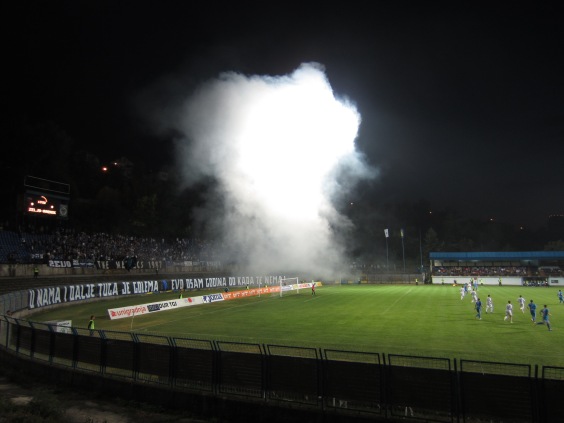
Stadium Grbavica, FK Zeljeznicar versus FK Radnik Bijeljina, 2-2, August 25, 2013.
That night, FK Zeljo was playing for top spot in the league. The game was tense and finished in a 2-2 draw after a late equalizer by the opposing side, As we left with Hrapovic, we walked through the Grbavica region to a local pub. He told us that low-rise apartments that fill out the area were originally built by the communists in order to house members of the Yugoslav National Army (JNA). When the League of Communists was dissolved by Belgrade in 1991, the loyalties among the 138,000 soldiers severely strained. Communism was the ideological glue underpinning Yugoslav society and helped multi-ethnic institutions like the armed forces transcend caustic ethnic vendettas. Without that bond, a nationalistic military junta in favour of partition was able to emerge from the tattered army. Many of the nationalists were concentrated in the Grbavica region, which explains why it fell so quickly in early 1992 when the remnants of the JNA was hijacked by Belgrade and used to squelch dissent and resistance.
Conclusion: the Road to the Sao Paolo, Brazil
Hrapovic let us in on a family secret. He was the son-in-law of Faruk Hadzibegic, the retired captain of the Yugoslavian National Team, who played in the Bosnian, Spanish, and France premier leagues. Over shisha, Hrapovic told us that, in his mind, the wars in the former Yugoslavia might have been avoided if not for one simple twist of fate.
In the 1990 World Cup in Italy, Yugoslavia was squaring off against the Argentines, including Diego Maradona, in the quarter-finals. The Yugoslav team had no breakaway superstars but in terms of team play, were one of the tightest units in the world. After a 0-0 draw in regulation and extra time, the game went to penalty kicks. Hadzibegic, the 2nd most capped player in Yugoslav history, was the last to kick. Giving everything he had, the penalty kick tragically ricocheted off the woodwork. He had missed and Yugoslavia was sent home. Germany would go on to win the title.
Had he made the kick, Hrapovic imagined, Yugoslavia would have stayed together, the many and various people united by their loyal support.
Not likely. But the sentiment cuts to the heart of how people feel about the 2014 Dragons. The team has defied the political vendettas of the apparatchiks who control the organs of the state. They’re heading to the world stage behind an unusually united population. Football is no substitute for substantive constitutional reform but the international stage will undoubtedly bring a recognition to the desperately serious situation in Post-Dayton Bosnia. No cup could replace the joblessness, poverty, and underlying tensions pervasive in the country. It would be a nice consolation though.
Another set of question is how the team will perform. They have a favourable draw in the group stage (Group F: Argentina, Bosnia and Herzegovina, Iran and Nigeria). But might Dzeko be the team’s undoing, his elevated stature detrimental to team cohesion? Coach Safet Sasic, another of Bosnia’s greats, will need to strike a balance between letting the top scorer lead the charge but, most critically, play with the team. Dzeko is one of the EPL’s biggest stars and with the weight of his nation on his shoulders, playing with and not above his team is critical.
During our last meeting with Hrapovic, he told us of the immense challenges facing him: how can he get the necessary funds together in a few short months to attend the World Cup in Brazil—the price of admission and air fare equivalent to one year’s pay for the average Bosnian. With another child on the way, the challenge is daunting.
Win or lose, the happiness and excitement the Dragons have brought to Bosnia and Herzegovina is well-deserved and long, long overdue. The World Cup is becoming fiercely political. From street clashes in Brazil to the savage working conditions of labourers building up Doha, Qatar for 2022, the global stage is giving voice to the myriad political struggles common people are waging against the powers that be. Bosnia is no exception and the history of the Dragons bears witness to the long and tumultuous struggle of Bosnians to control their collective political destiny.
Morgan and Justin both live in Toronto and travelled through the Balkans for 3 months in the fall of 2013. Follow them at @justinpanos and @morganradbourne
